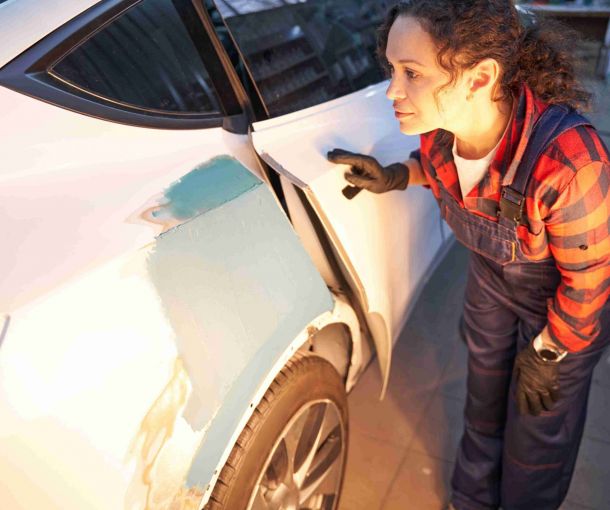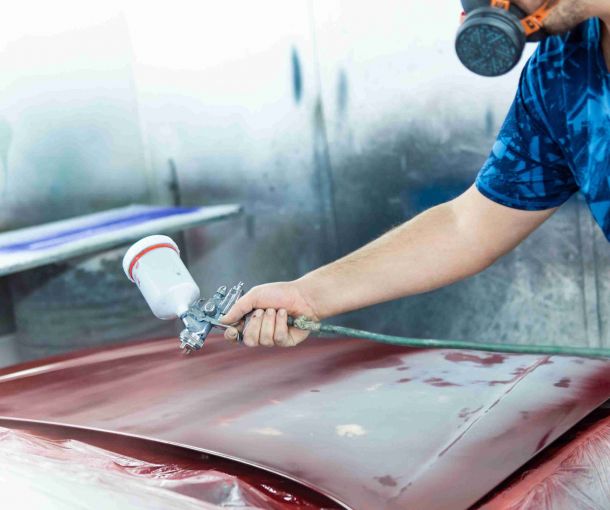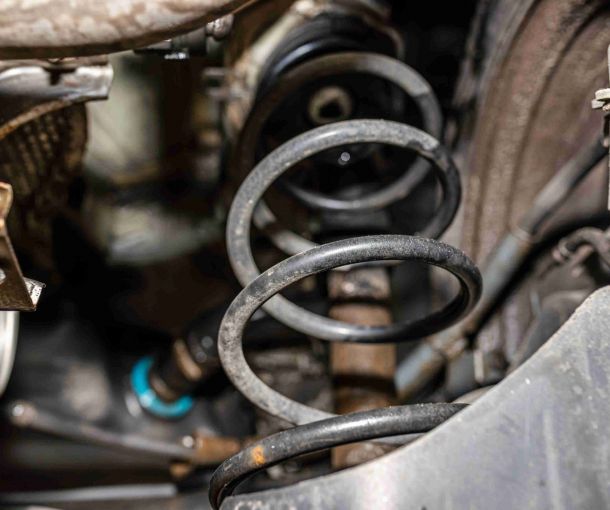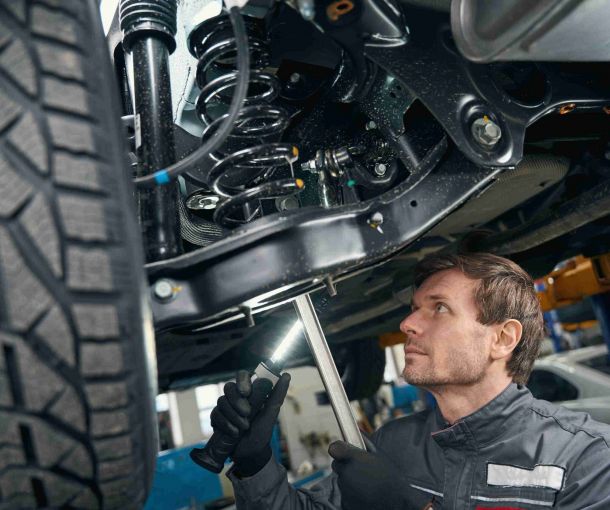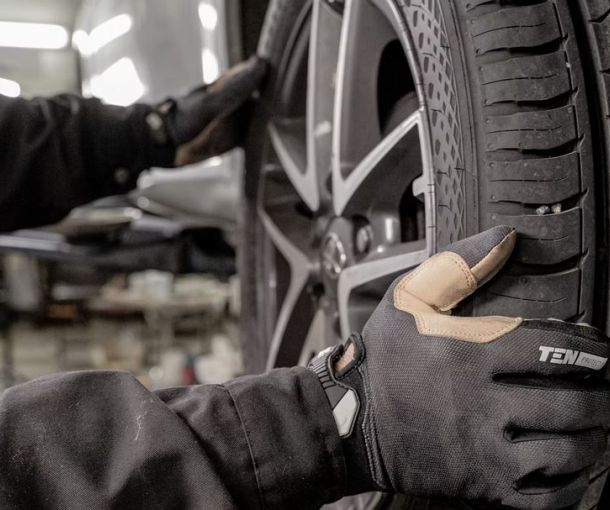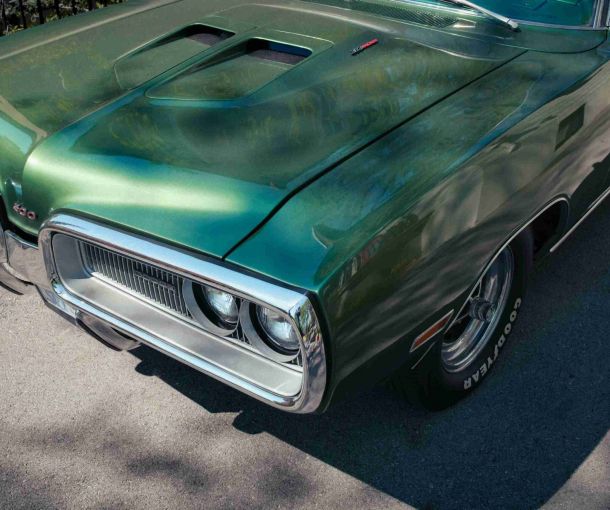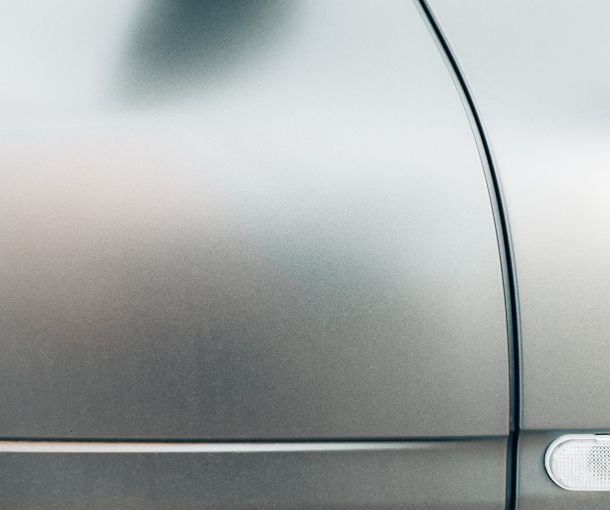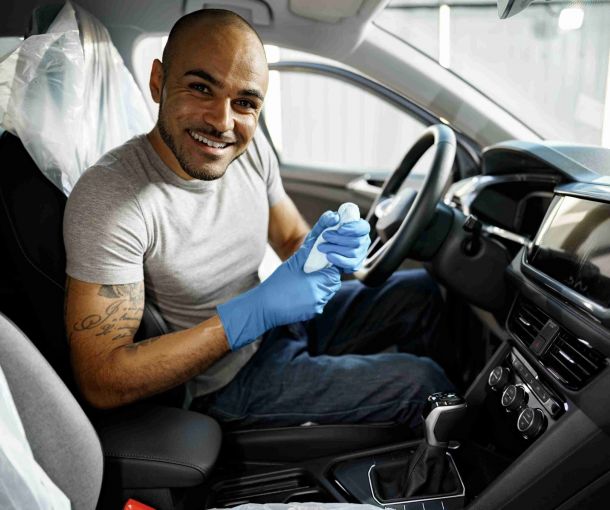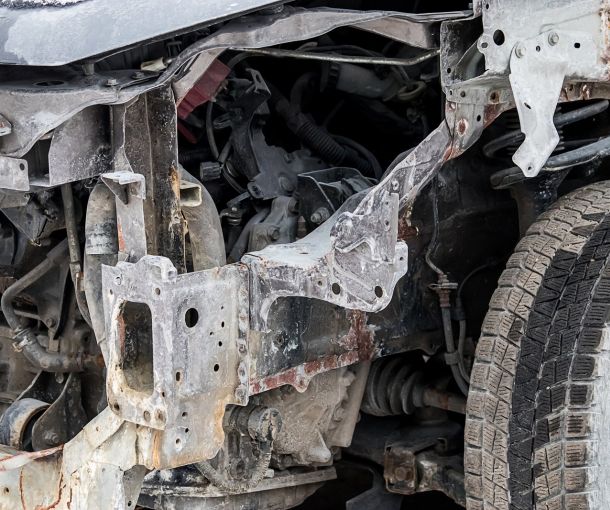Creaking From Front Suspension? (Here’s How To Fix It)
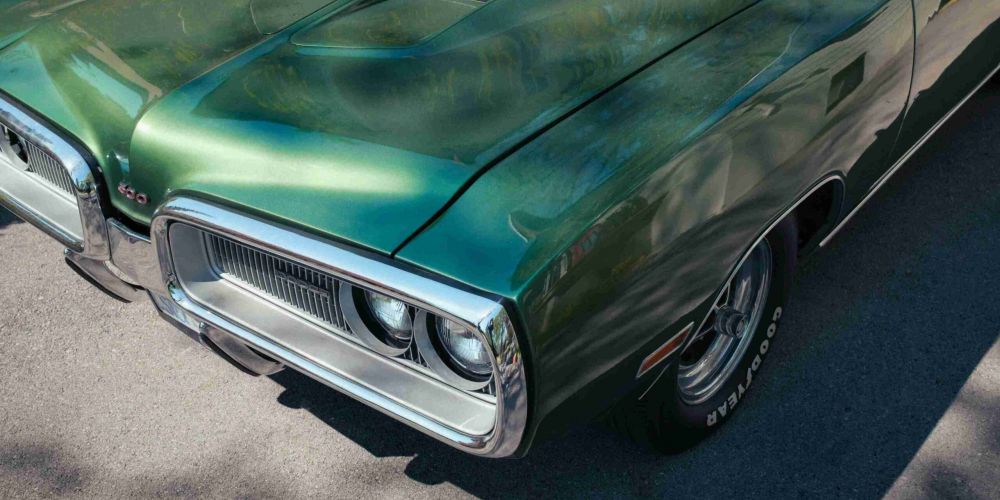
Hearing a weird creaking noise coming from your front suspension?
You’re not alone. That sound can drive you nuts, especially when it shows up every time you go over a bump or take a turn.
The good news is that it’s usually something you can fix, and often without breaking the bank.
In this post, we’ll shed some light on what’s causing that creaking sound from the front suspension and how you can shut it up for good.
Table of Contents
ToggleWhy Is My Front Suspension Creaking?
The suspension is made up of a lot of moving parts (joints, bushings, springs, mounts) all working together to keep your ride smooth. If any of these wear down, dry out, or just stop cooperating, they start making that creaking noise.
Let’s go over each of these in more detail:
Also Read: Car suspension repair cost
#1 Not Enough Lubrication
This is one of the most common and easiest-to-fix problems.
Your suspension has rubber and metal parts that need to move smoothly together. Over time, dirt, moisture, and age can dry things out.
No grease means more friction. More friction means creaking. You’ll often hear it when going slow or pulling into a driveway. A dry bushing or joint can squeak like an old rocking chair.
A quick spray of silicone lubricant on those bushings or joints might give you instant relief. If it does, you’ve found the culprit.
Just know it might be a temporary fix if the part is already too far gone.
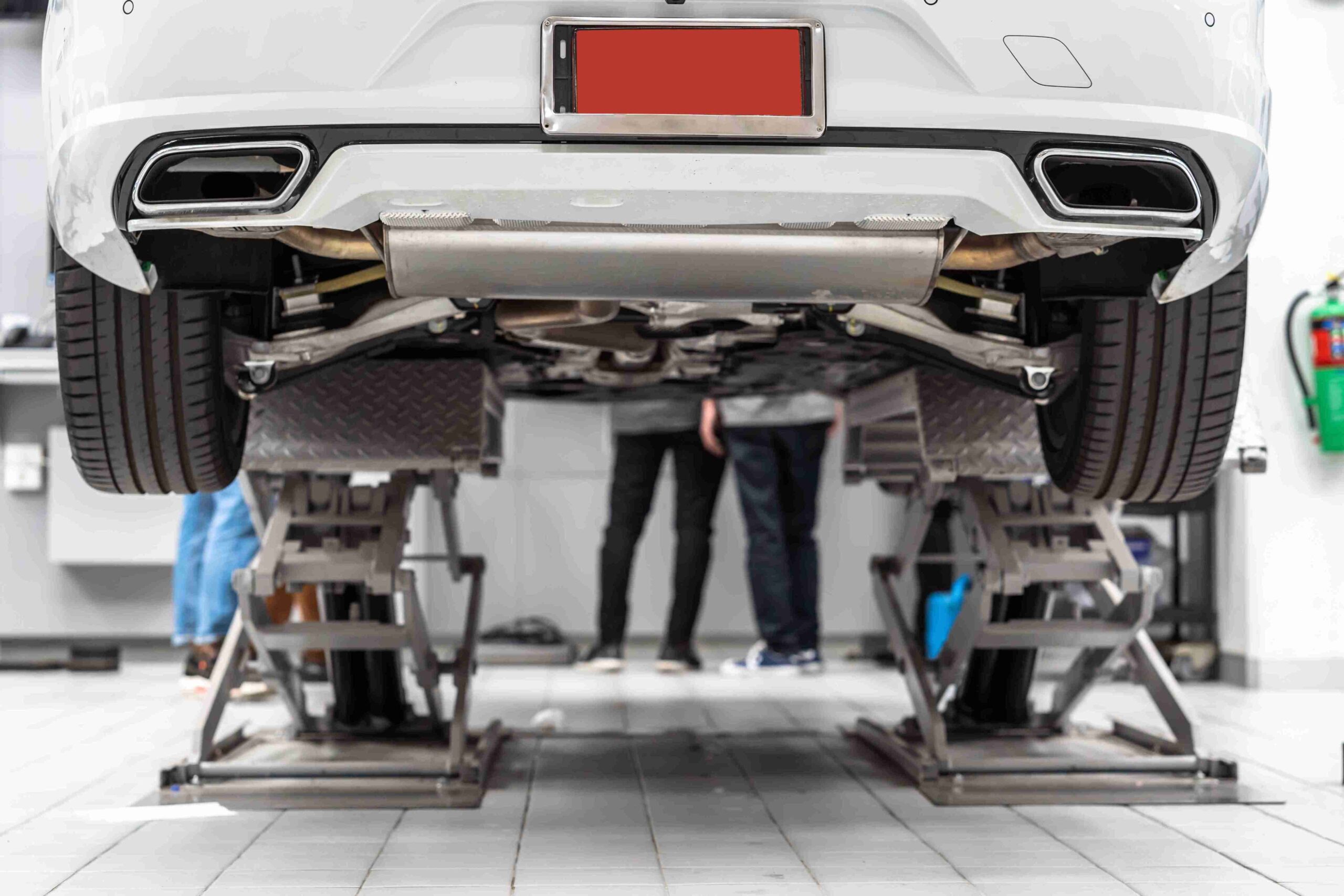
#2 Worn Ball Joints
Worn ball joints can also cause creaking from front suspension.
Ball joints hold your steering knuckle to the control arms, and they’re designed to pivot in all directions. They’re packed with grease and sealed when new, but after a while, that grease can break down or leak out.
Plus, dirt can also sneak in and wear the joint down from the inside.
Once that joint gets loose or stiff, it won’t move as smoothly, and the extra play creates movement you shouldn’t be hearing.
That creaking usually shows up when turning the wheel or hitting uneven pavement.
If the joint’s really worn, you might even feel it in the steering or hear a clunk along with the creak.
Also Read: How Much Does Car Frame Damage Repair Cost In Virginia?
#3 Dry Or Worn Bushings
Bushings are those small rubber or polyurethane parts that sit between components and absorb movement and vibration. They’re found in all kinds of places – control arms, sway bars, and even strut mounts.
Over time, they start to crack, shrink, or harden.
When that happens, they can’t absorb impact like they used to, and the parts around them start shifting or rubbing. That’s when the creaking kicks in.
You’ll usually notice it during turns, braking, or going over bumps.
The sound comes from the dry rubber moving against metal or twisting more than it should.
#4 Worn Out Strut Mounts Or Bearings
Strut mounts sit on top of your front struts and help connect them to the chassis.
Inside those mounts, there are bearings that allow the strut to rotate when you turn the steering wheel. Over time, those mounts can wear out, and the bearings inside can start to seize up or develop play.
When that happens, every turn of the wheel or shift in weight makes the mount move awkwardly. You’ll hear creaking or groaning, usually right around the front wheels.
It’s very noticeable during tight turns or when parking, because that’s when the mounts are twisting the most.
#5 Worn Sway Bar Links Or Bushings
Worn sway bars are another reason behind creaking from front suspension.
Your sway bar helps keep the car level when you’re turning corners. It keeps things stable so you’re not leaning too far into turns. The links and bushings are what hold the sway bar in place and let it flex just the right amount.
If the bushings dry out or the links start to loosen, you’ll hear creaks usually when driving over uneven roads or cornering. It’s often more noticeable when driving slowly or parking.
Also Read: how much does wheel repair cost?
These parts are usually inexpensive and relatively quick to replace.
Just don’t ignore them too long. A broken sway bar link can throw off your handling and make your car feel unpredictable.
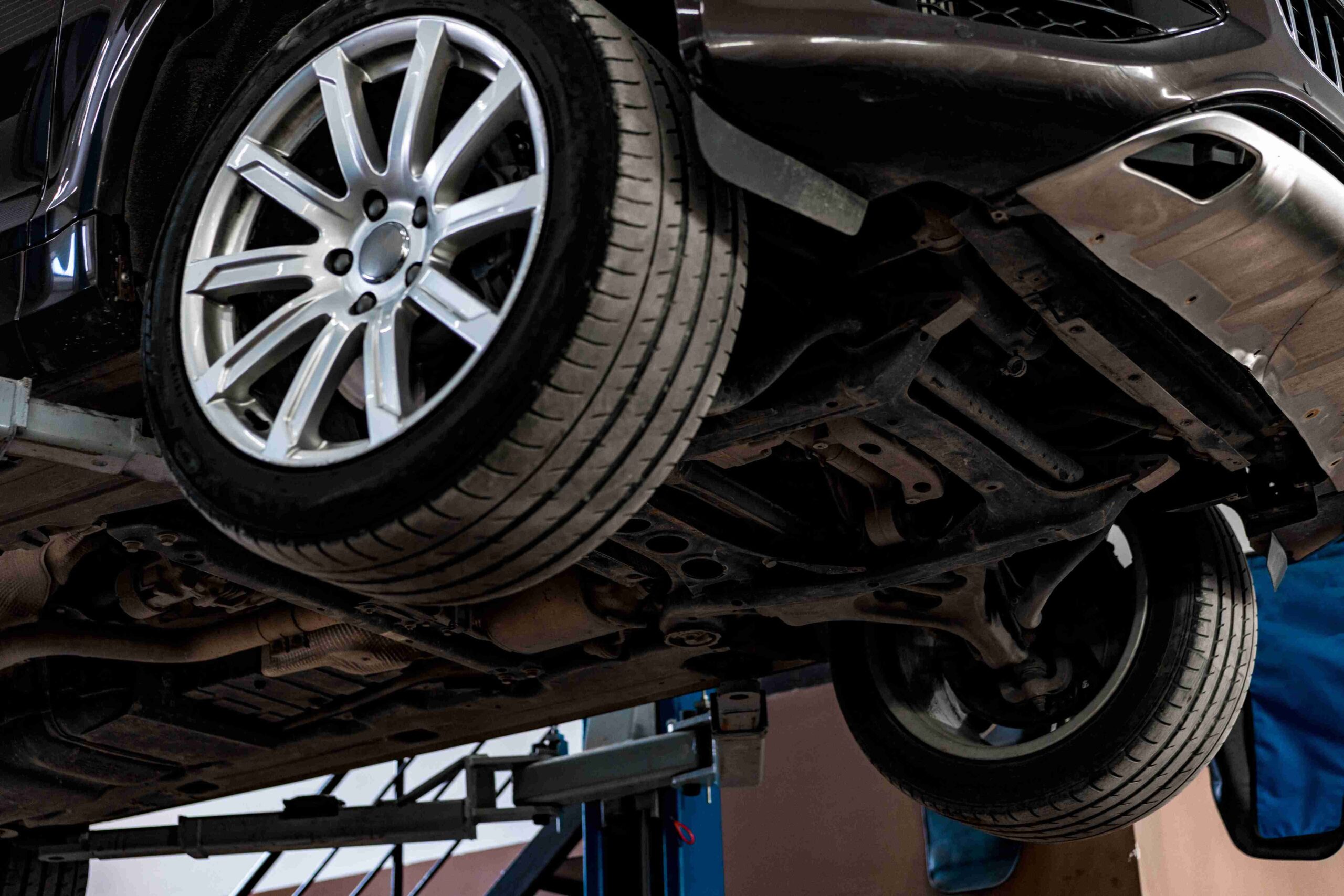
#6 Damaged Coil Springs
Coil springs carry a lot of weight and stress every time you drive. They compress and rebound constantly, helping to support the vehicle and absorb bumps.
If one of them gets cracked or shifts out of place, it can start rubbing against the suspension or strut assembly.
That rubbing turns into creaking – especially when turning or driving over rough roads. Damaged springs can also make your car sit unevenly or feel floaty or bouncy on one side.
Replacing coil springs usually means doing both sides so your suspension stays balanced.
It’s not always a DIY job, but definitely worth getting done right if you suspect one is damaged
How To Stop My Front Suspension Creaking
Now that you’ve got an idea of what might be making the noise, let’s talk about fixing it. You don’t need to be a master mechanic to take a few first steps. In fact, some of the easiest fixes can be done with a can of spray lube and a little patience.
If the noise sticks around, that’s your sign to let a pro take a closer look. Here’s a simple approach to track down the problem and start quieting things up:
- Do a bounce test on the front end and listen for any squeaks or groans
- Spray silicone lube on visible bushings and joints to see if it helps
- Check for any cracked or missing rubber bushings
- Look under the car for anything loose, rusty, or obviously worn
- Listen closely when turning or driving over bumps to narrow down the source
If it still creaks, have a mechanic inspect the suspension on a lift
Bottom Line
Creaking from your front suspension doesn’t mean your car’s about to fall apart, but it does mean something needs attention. It’s usually dry or worn parts doing all the complaining.
A bit of grease might quiet it down. If not, a new bushing or joint might be the fix.
The longer you wait, the louder and more expensive it can get. So if that creak’s been bugging you, take a little time to track it down.
Or swing by a shop and have someone look at it.
Either way, your ears (and your suspension) will thank you.

